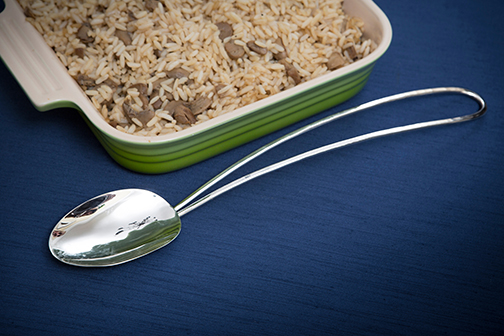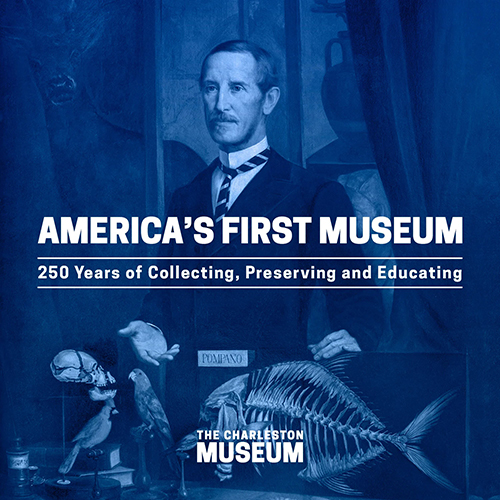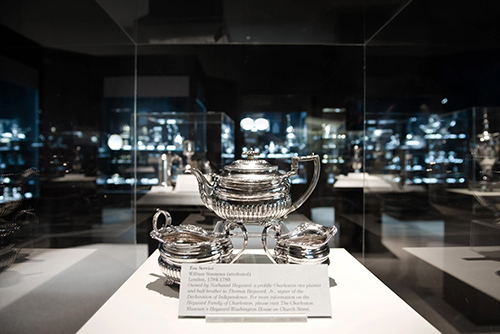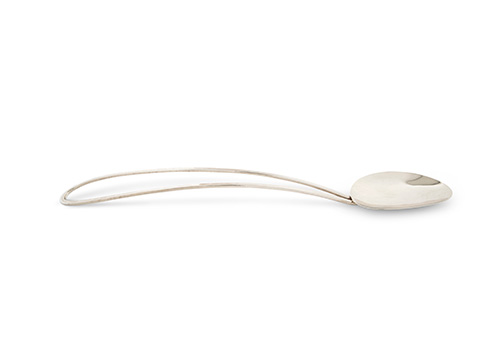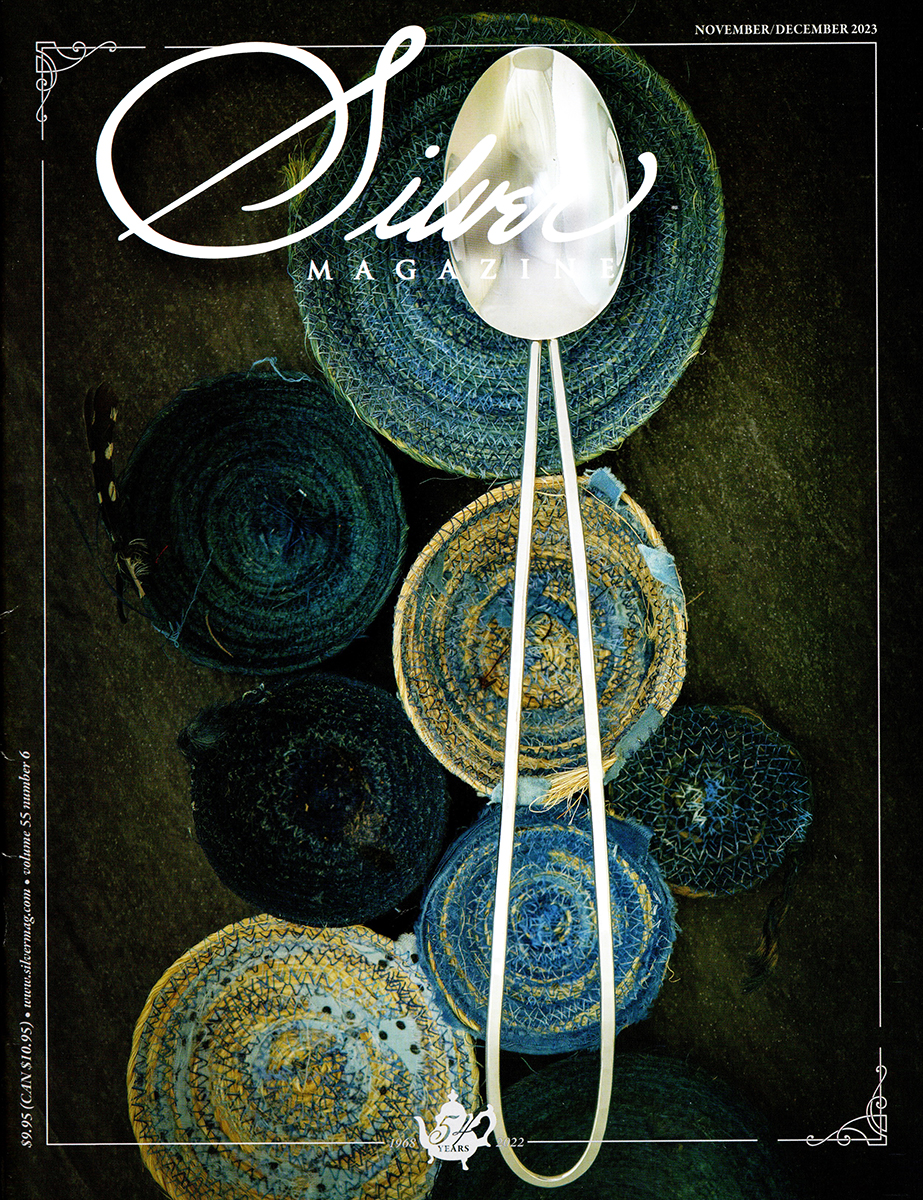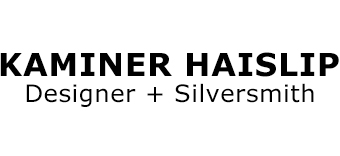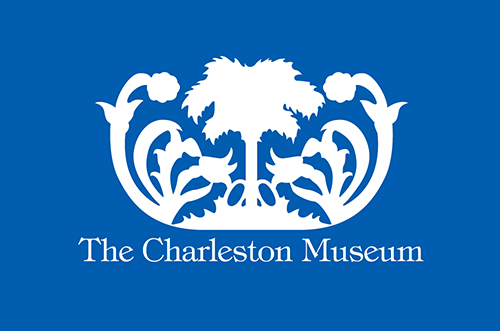
Holy City Sinner
Skilled silversmith Shares Her Craft with ACBA Students and Arts Community
November 5, 2024
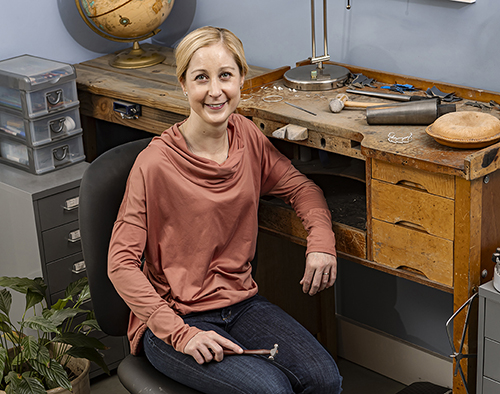
Fiery welding torches with blue and yellow flames, molten solder, acid washes, rotating sanders, piercing, sawing, cutting, and pounding: metalsmithing in a no-nonsense workshop. How is it that Silversmith Kaminer Haislip moves with such elegance, assurance, and strength in this environment? Most of her students, if not all, are newcomers to the craft of silver jewelry making. She inspires confidence so that within a few hours they are able, with her close guidance, to fashion something beautiful and wearable.
Well, Kaminer was pretty much born to be a metalsmith, though it took time and training to recognize her strengths and to specialize in silver jewelry and larger functional objects. All are art objects.
“I grew up in my family’s hardware and appliance business in Aiken, SC, and from a young age I was exposed to tools, equipment, and working with your hands. My brother and I would put together bicycles, wheelbarrows, and Radio Flyer wagons when we were kids to help out. Those experiences directly influenced me to take the Industrial Tech class in high school, so I could learn to weld. From there I started making very early metal sculptures and jewelry pieces.”
Kaminer works almost exclusively in sterling silver, although she sometimes inserts other metals in her designs. Similarly, community participants in her recent silver ring-making workshop hosted jointly by the American College of Building Arts (ACBA), where she is an instructor, and the Redux Contemporary Art Center on King Street were each given a stretch of sterling silver and directions on conceiving and fashioning their own ring. Kaminer is comfortable with instructing, endlessly patient, and encouraging.
What particularly speaks to her about working with silver? “Silver is an incredibly malleable metal that can be transformed in so many different ways depending on how it is hammered, formed, and fabricated. It also holds its shape when tension is put in it and is extremely durable, which makes it an ideal metal for functional objects.”
Kaminer enjoys the time she takes from working in her own studio to teach silversmithing to ACBA college students. In addition, her workshop at Redux is the first of what is expected to be a range of offerings to the general public. Soon other ACBA instructors will also be leading workshops in their areas of expertise.
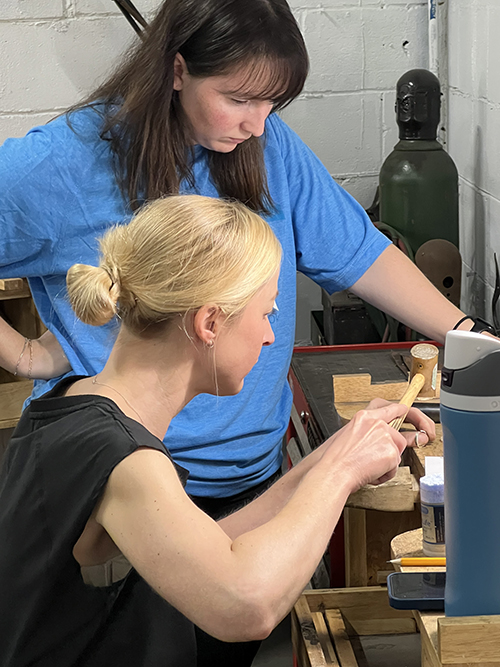
“I enjoy sharing my knowledge of metalsmithing and experiences as a business owner with my students to help educate the next generation of craftspeople. Many of the crafts taught at ACBA are obscure, with very few people in the United States having the skills to teach them. I was honored when they invited me to teach an elective metalsmithing and jewelry class to provide the students with a new learning opportunity. The students at ACBA are extremely talented, enthusiastic, engaged, and eager to learn. It has been a very fun and rewarding experience that gets me out of my studio and into the world once a week.”
As might be expected, training to be a silversmith takes years of training and experience. “For both my BFA in Jewelry and Metals and MFA in Silversmithing and Design, I studied under Alfred Ward, an internationally acclaimed English silversmith from London. He taught me everything I know about silversmithing and introduced me to making functional objects and hollowware. I felt it was a way to combine my early interest in jewelry and sculpture, so it was the focus of my studies and has been the basis of my career.”
Asked about the way she approaches design for a piece of jewelry or a functional object, Kaminer explained the multistep process that underlies even what may appear to be a simple design.
“I always draw my designs before moving to precious metal, because it is easier and faster to change them on paper than in metal. Also, less expensive! Additionally, for my functional objects, I make a paper model to figure out the three-dimensional form and template for the silver sheet to cut out.”
The inspiration? Are the shapes and designs she creates in any way derived from nature? “Birds have been a prevalent theme in my work over the years and have shown up in hollowware, flatware, and bowl designs. Other natural forms, such as an oyster shape for a jewelry collection and dish, clouds etched onto silver vessels, and poppy flowers for a jewelry series and bowl, have influenced my designs.”
Now, of course, it’s not surprising that Kaminer does wear some of her own beautiful silver rings, bracelets, pendants, and earrings. But what about her functional objects—does she use them?
“Over the course of my career, I have made a wide variety of home objects, including coffee pots, teapots, cream and sugar sets, trays, pitchers, cups, vases, bowls, boxes, serving utensils, and spoons. In my own home, I have the first teapot I made as well as trays, vases, boxes, dishes, and bowls that are both for use and display. My silver serving spoon, salad servers, bar spoons, and appetizer utensils, such as my spreader and cheese knife, come in handy when my husband and I host company.”
When you think of heirloom silver, baby spoons might come to mind. And, yes, Kaminer does make baby spoons and other baby gifts to be treasured and handed down from one generation to the next. “I made my first baby cup in college, and from there my silver baby gifts took off. I began receiving lots of requests for them, so when I established my business, they were an early offering and continue to be popular. Silver baby gifts are a time-honored tradition, and I had my own silver baby cup and spoon as a child, so that inspired me to start making heirloom baby items. Ergonomics has a direct impact on my functional objects, so for baby pieces I must make sure the proportions are correct for their little hands. The rattle in particular they seem to really enjoy, and it fits in their tiny hands just right.”
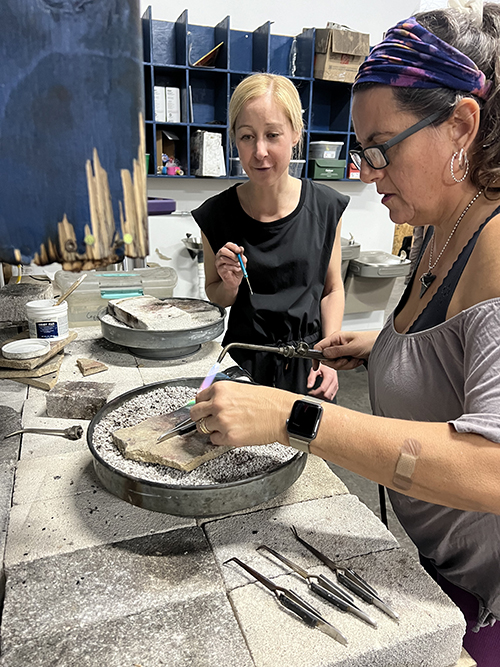
Beyond her website, which features many objects for purchase, Kaminer accepts commissions and finds it exciting, challenging, and rewarding to work to realize these projects. “It has been such a compliment for clients to commission custom objects and jewelry in silver and gold from me over the years. I have made some extremely interesting and complicated pieces, but one of the most unique would have to be the silver globe project, Mother Earth. The client was inspired by a sculpture his late brother had created in his youth when he was a welder. He wanted to honor his brother with a similar design in silver. Each component of the silver version called for a different technique and multiple processes in order to achieve his vision for the sculpture and to bring it to life. It was challenging to say the least and an out of this world project!”
Celebration this year of the 20th anniversary of the American College of Building Arts comes with the excitement of opening a new 6,000 sq ft blacksmith facility in July 2024 at 1084 King Street, directly next door to Redux. Included in this new space is the small metals and jewelry studio where copper metalsmithing and beginner jewelry making elective classes are taught.
As more classes in other disciplines are added in early 2025, schedules and class descriptions will be posted at ReduxStudios.org under the “Learn” tab.
https://holycitysinner.com/lifestyle/skilled-silversmith-shares-her-craft-with-acba-students/
